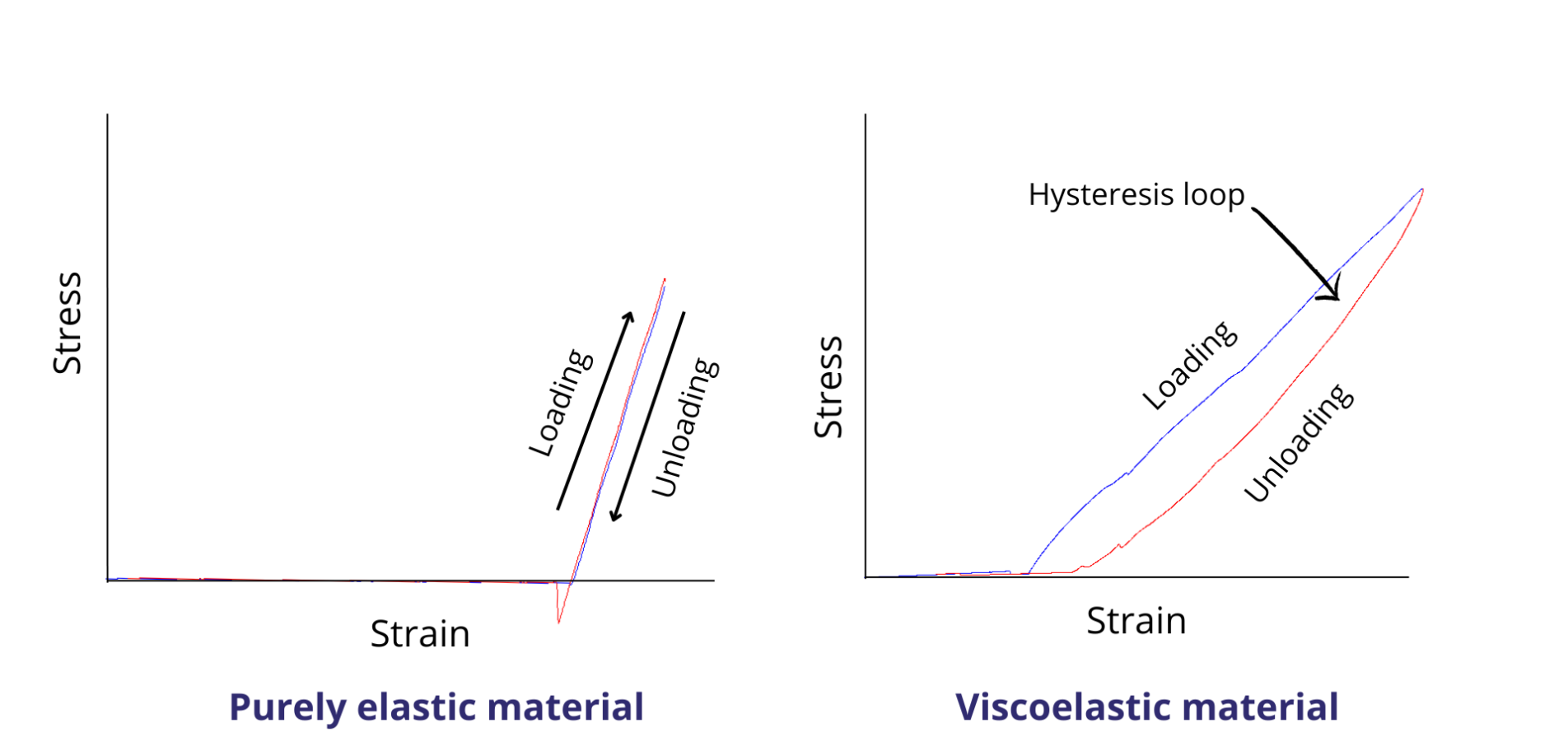

Elasticity is the ability of the skin to return to its original shape after deformation. In other words, it is the skin’s ability to stretch and then recoil.
There’s a lot of publications about skin mechanical properties during ageing, some controversial. However, in the realm of physics, skin is not just elastic but also exhibits viscoelastic properties.
When discussing the aging of skin, should we exclusively focus on elasticity, or is it necessary to consider its complete set of physical characteristics, including viscoelasticity?
Definitions and mechanisms
What is elasticity?
Elasticity is a concept that describes different aspects of the skin’s mechanical properties and refers to the skin’s ability to stretch under mechanical stress and then return to its original shape once the stress is removed.
What is viscoelasticity?
Viscoelasticity is a more comprehensive concept than elasticity and includes both elastic (immediate recovery) and viscous (time-dependent) properties. It describes how the skin deforms under stress over time and how it responds to both immediate and sustained forces.
What is the mechanism involved in skin elasticity?
Elasticity is primarily determined by the presence of elastin fibers in the skin. Elastin enables the skin to expand and contract, providing it with the ability to adapt to movements and deformations.
It has been widely demonstrated that ageing involved a lack of elasticity, suggesting a potential loss of elastin fibers. However, the intricacies of this process are more complex than a simple reduction in elastin. The skin comprises 3 main interconnected compartments, then not only elastin fibers are involved in skin elasticity. Collagen fibers are also important to consider, even though they are more prominently associated with skin stiffness.
What is the difference between skin elasticity and viscoelasticity?
While both skin elasticity and skin viscoelasticity involve the skin’s response to mechanical stress, elasticity specifically focuses on the immediate ability to stretch and recoil.
Viscoelasticity encompasses both immediate and time-dependent responses, considering the elastic and viscous properties of the skin.
Conclusion
There is a limited amount of research focused on exploring the impact of aging in the viscous or viscoelastic characteristics, in contrast to the extensive number of studies dedicated to elastic properties.
All the results aren’t very consistent, making it challenging to make definite statements about the connection between aging and the viscous/viscoelastic properties of skin.
The conflicting results can be mainly attributed to variations in techniques, selected site, subjects’ gender, type of aging (e.g., intrinsic aging vs. photoaging), sample state (e.g., in vivo, ex vivo, and in vitro), and skin anisotropy, among other factors.
For example, most studies assumed the skin had the same properties in all directions (isotropic characteristics). Yet, it was found that the skin is different in various directions (anisotropic properties) because of the way collagen fibers are arranged in the dermis. This leads to different mechanical properties within the same area of skin.
BioMeca is totally involved in the highltight of viscoelasticity assessed by Atomic Force Microscopy. This fantastic tool fits completely to measure this physics parameter to give accurate insights about the effect of cosmetic products on skin models. Furthermore, in a same experiment, AFM can assess skin stiffness, viscoelasticity and collagen network characterisation. Isn’t it incredible?
In summary, this article sets the stage to encourage further investigation of the viscous/viscoelastic properties of the skin, under external factors or not.
It’s important to remember that the skin is an intricate and remarkable tissue, serving as a connection between us and the universe. Protecting and caring for our skin is important, and it’s essential to understand how it works overall.
[1] Park S. et al, Biochemical, structural and physical changes in aging human skin, and their relationship
[2] Tetsuya Nemoto, Ryo Kubota, Yusuke Murasawa and Zenzo Isogai, Viscoelastic Properties of the Human Dermis and Other Connective Tissues and Its Relevance to Tissue Aging and Aging–Related Disease





